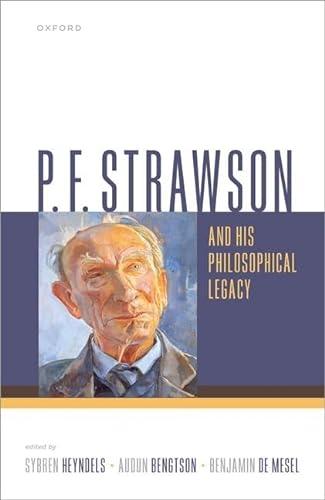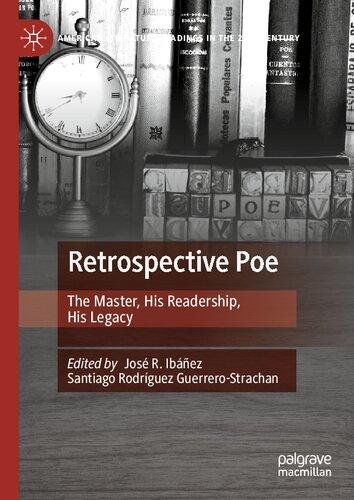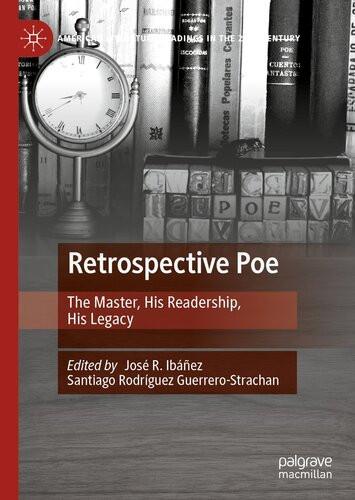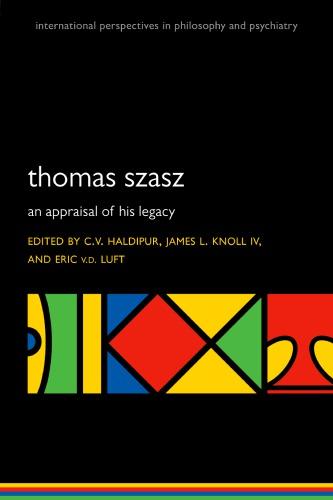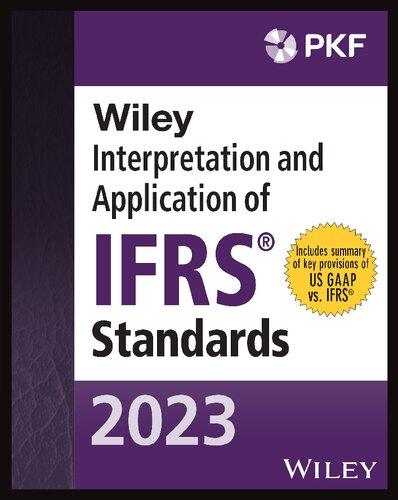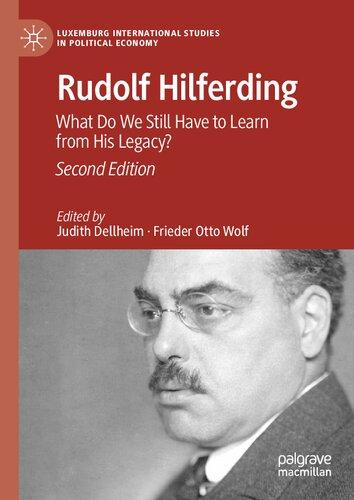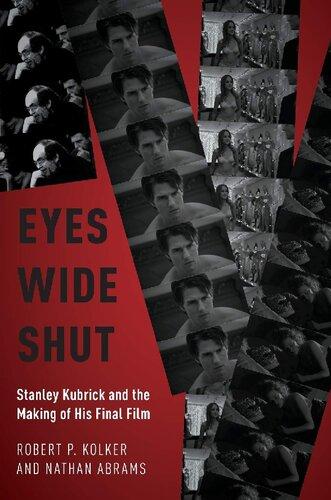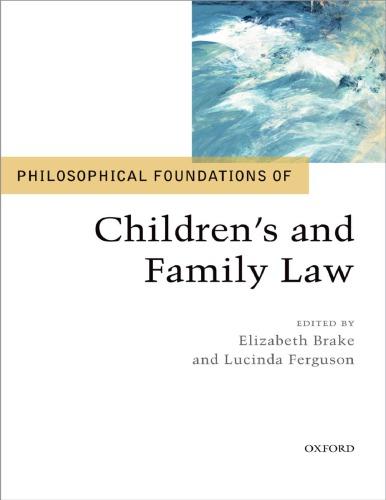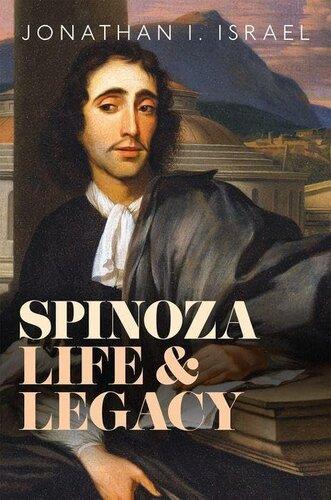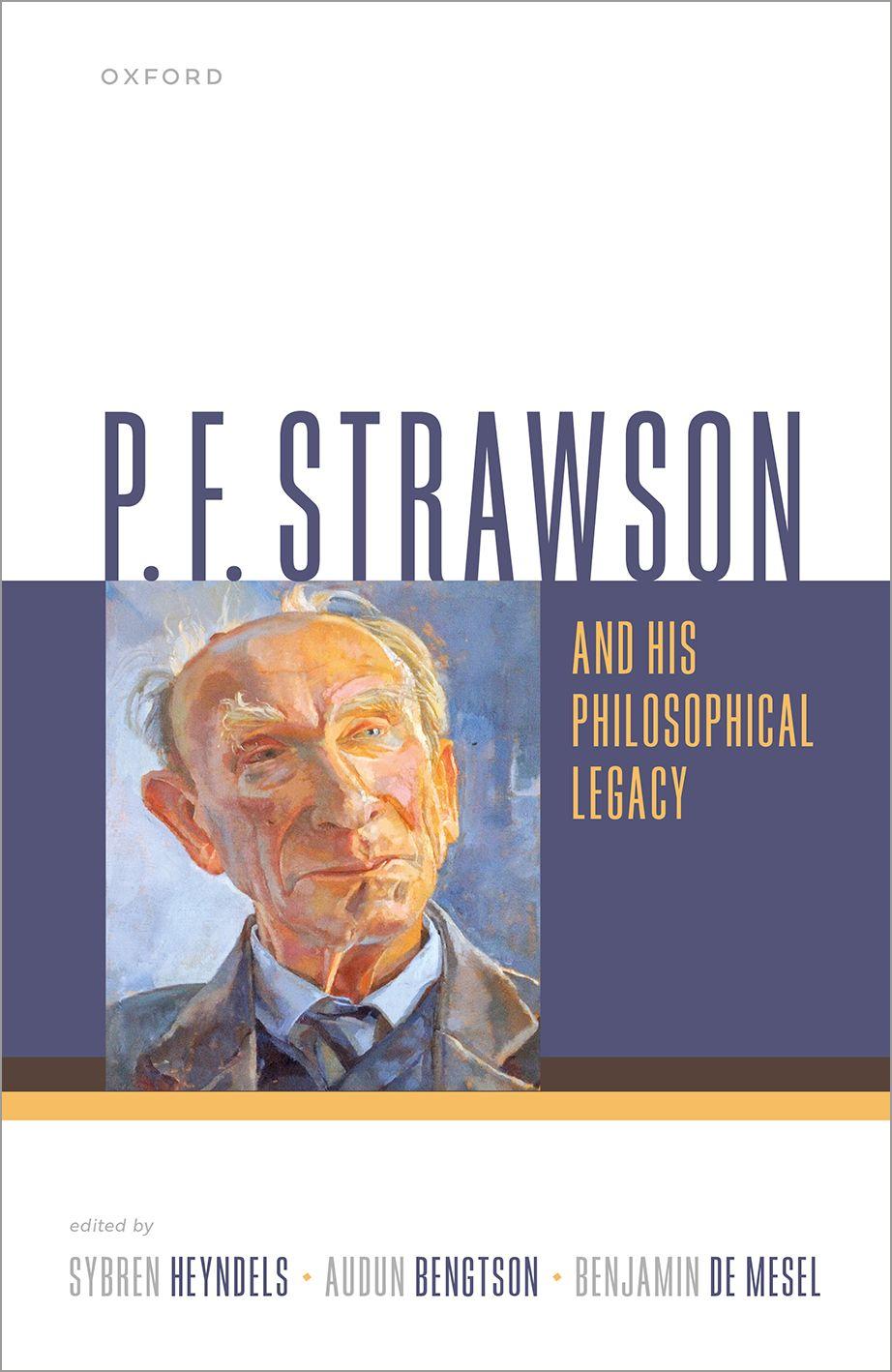P. F. Strawson and his Philosophical Legacy 1st Edition Sybren Heyndels Visit to download the full and correct content document: https://ebookmass.com/product/p-f-strawson-and-his-philosophical-legacy-1st-editionsybren-heyndels/
More products digital (pdf, epub, mobi) instant download maybe you interests ...
Retrospective Poe: The Master, His Readership, His Legacy 1st Edition José R. Ibáñez Ibáñez
https://ebookmass.com/product/retrospective-poe-the-master-hisreadership-his-legacy-1st-edition-jose-r-ibanez-ibanez/
Retrospective Poe: The Master, His Readership, His Legacy 1st Edition José R. Ibáñez Ibáñez
https://ebookmass.com/product/retrospective-poe-the-master-hisreadership-his-legacy-1st-edition-jose-r-ibanez-ibanez-2/
Chaitanya: A Life and Legacy Amiya P. Sen
https://ebookmass.com/product/chaitanya-a-life-and-legacy-amiyap-sen/
Thomas Szasz: An Appraisal Of His Legacy C. V. Haldipur
https://ebookmass.com/product/thomas-szasz-an-appraisal-of-hislegacy-c-v-haldipur/
Wiley 2023 Interpretation and Application of IFRS Standards 1st Edition P. K. F. Pkf Internation
https://ebookmass.com/product/wiley-2023-interpretation-andapplication-of-ifrs-standards-1st-edition-p-k-f-pkf-internation/
Rudolf Hilferding. What Do We Still Have to Learn from His Legacy? 2nd edition Judith Dellheim
https://ebookmass.com/product/rudolf-hilferding-what-do-we-stillhave-to-learn-from-his-legacy-2nd-edition-judith-dellheim/
Eyes Wide Shut: Stanley Kubrick and the Making of His Final Film Robert P. Kolker
https://ebookmass.com/product/eyes-wide-shut-stanley-kubrick-andthe-making-of-his-final-film-robert-p-kolker/
Philosophical Foundations of Children’s and Family Law
Elizabeth Brake
https://ebookmass.com/product/philosophical-foundations-ofchildrens-and-family-law-elizabeth-brake/
Spinoza, Life and Legacy. 1st Edition Prof Jonathan I. Israel.
https://ebookmass.com/product/spinoza-life-and-legacy-1stedition-prof-jonathan-i-israel/
P.F.Strawsonandhis PhilosophicalLegacy Editedby
SYBRENHEYNDELS AUDUNBENGTSON and BENJAMINDEMESEL GreatClarendonStreet,Oxford,OX26DP, UnitedKingdom
OxfordUniversityPressisadepartmentoftheUniversityofOxford. ItfurtherstheUniversity’sobjectiveofexcellenceinresearch,scholarship, andeducationbypublishingworldwide.Oxfordisaregisteredtrademarkof OxfordUniversityPressintheUKandincertainothercountries
©OxfordUniversityPress2024
Themoralrightsoftheauthorshavebeenasserted Allrightsreserved.Nopartofthispublicationmaybereproduced,storedin aretrievalsystem,ortransmitted,inanyformorbyanymeans,withoutthe priorpermissioninwritingofOxfordUniversityPress,orasexpresslypermitted bylaw,bylicenceorundertermsagreedwiththeappropriatereprographics rightsorganization.Enquiriesconcerningreproductionoutsidethescopeofthe aboveshouldbesenttotheRightsDepartment,OxfordUniversityPress,atthe addressabove
Youmustnotcirculatethisworkinanyotherform andyoumustimposethissameconditiononanyacquirer
PublishedintheUnitedStatesofAmericabyOxfordUniversityPress 198MadisonAvenue,NewYork,NY10016,UnitedStatesofAmerica
BritishLibraryCataloguinginPublicationData Dataavailable
LibraryofCongressControlNumber:2023941734
ISBN978–0–19–285847–4
DOI:10.1093/oso/9780192858474.001.0001
PrintedandboundintheUKby ClaysLtd,ElcografS.p.A.
LinkstothirdpartywebsitesareprovidedbyOxfordingoodfaithand forinformationonly.Oxforddisclaimsanyresponsibilityforthematerials containedinanythirdpartywebsitereferencedinthiswork.
Acknowledgements vii ListofContributors ix Introduction1
SybrenHeyndels,AudunBengtson,andBenjaminDeMesel
1.StrawsononFalsePresuppositionandtheAssertiveEnterprise15 AnneBezuidenhout
2.MeaningandSpeechActs38 IanRumfitt
3.Strawson’sBasicParticulars59 PaulSnowdon
4.StrawsononOtherMinds79 QuassimCassam
5.P.F.Strawsonandthe ‘Pseudo-MaterialShadows’ 99 MichelleMontague
6.ConceptsandExperiencein BoundsofSense andBeyond120 Hans-JohannGlock
7.Strawson’sMetacritique146 AnilGomes
8.Seeing(Morethan)WhatMeetstheEye:ACritical EngagementwithP.F.Strawson169 LilianAlweiss
9.ToReply,orNottoReply,ThatIstheQuestion:Descriptive MetaphysicsandtheScepticalChallenge192 GiuseppinaD’Oro
10.P.F.StrawsonandConnectiveAnalysis213 A.P.Martinich
11.ResponsibilityAfter ‘Morality’:Strawson’sNaturalismand Williams’sGenealogy234 PaulRussell
DimensionsofResponsibleAgency280 VictoriaMcGeer
Acknowledgements Wewouldliketoexpressourgratitudetoallthosewhohavehelpedtomakethis volumepossible.Thiscollectionoriginatesinaconferencethatweorganizedat theInstituteofPhilosophy,KULeuven,inNovember2019,ontheoccasionof whatwouldhavebeenP.F.Strawson’s100thbirthday.Wewouldliketothankall conferenceparticipantsandoursponsors,theInstituteofPhilosophy,theFWO (ResearchFoundationFlanders),andtheIrishResearchCouncil.
WearegratefultoourOxfordUniversityPresseditor,PeterMomtchiloff,who believedinourprojectfromthestartandgaveushelpfuladvice.Thankstothe entireOUPteaminvolvedintheproductionofthisbook,andtoLexAcademicfor providingexcellenteditorialassistanceontheentirevolume.Mostimportantly, wewouldliketothankourauthorsfortheiroutstandingworkandcooperation.
WededicatethisvolumetoPaulSnowdon,whosadlypassedawaywhilethis bookwasinpreparation,andtofourpeoplewhotaughtustoappreciate Strawson ’sworkand,moregenerally,todophilosophy:ArnoldBurms,Stefaan Cuypers,BartPattyn,andStefanRummens.Wehavelearntalotfromyouandwe hopethatourvolumereflectsthis.Thankyouverymuch.
SybrenHeyndels,KULeuven AudunBengtson,NorwegianDefenceUniversityCollege BenjaminDeMesel,KULeuven
ListofContributors LucyAllais isProfessorofPhilosophyattheUniversityofWitwatersrandandJohns HopkinsUniversity
LilianAlweiss isAssistantProfessorofPhilosophyatTrinityCollegeDublin
AudunBengtson isAdviserattheNorwegianDefenceUniversityCollege
AnneBezuidenhout isProfessorofPhilosophyandLinguisticsattheUniversityof SouthCarolina
QuassimCassam isProfessorofPhilosophyattheUniversityofWarwick
BenjaminDeMesel isAssistantProfessorofPhilosophyatKULeuven
GiuseppinaD’Oro isReaderinPhilosophyatKeeleUniversity
Hans-JohannGlock isProfessorofPhilosophyattheUniversityofZurich
AnilGomes isFellowandTutorinPhilosophyatTrinityCollege,OxfordandProfessorin PhilosophyattheUniversityofOxford
SybrenHeyndels isPostdoctoralFellowoftheResearchFoundationFlanders(FWO)atKU Leuven
VictoriaMcGeer isSeniorResearchFellowatPrincetonUniversityandProfessorof PhilosophyatAustralianNationalUniversity
A.P.Martinich isRoyVaughanCentennialProfessorEmeritusinPhilosophyatthe UniversityofTexasatAustin
MichelleMontague isProfessorofPhilosophyattheUniversityofTexasatAustin
IanRumfitt isSeniorResearchFellowatAllSoulsCollege,OxfordandProfessorin PhilosophyattheUniversityofOxford
PaulRussell isProfessorofPhilosophyatLundUniversityandtheUniversityofBritish Columbia(Emeritus)
PaulSnowdon wasEmeritusProfessoratUniversityCollegeLondon
Introduction SybrenHeyndels,AudunBengtson,andBenjaminDeMesel
ThisbookaimstobringoutthecontinuingrelevanceoftheworkofSirPeter FrederickStrawson(1919–2006).StrawsonwasoneofthemostinfluentialBritish philosophersinthesecondhalfofthetwentiethcentury.Hewaselectedtothe BritishAcademyin1960andreceivedaknighthoodin1977.Heneveraimedat acomprehensive,integratedsystem,buthecontributedtoawiderangeof debatesinthephilosophyoflanguageandlogic,metaphysics,epistemology, moralphilosophy,thehistoryofphilosophy,andphilosophicalmethodology. Hiswritingswerediscussedbytheworld’sleadingphilosophers,including BertrandRussell,WilfridSellars,HilaryPutnam,W.V.O.Quine,Donald Davidson,J.L.Austin,andSaulKripke.
StrawsonwasborninLondonandwentuptoOxfordin1937,wherehestudied Philosophy,Politics,andEconomics(PPE).Immediatelyafterhaving finishedhis studies,hewascalleduptothearmyinthesummerof1940.Heattainedtherank ofcaptainanddefendedputativelydelinquentsoldiersfacingcourtmartial,an experiencethatmayhavetriggeredsomeoftheideasinhisinfluentialpaper ‘FreedomandResentment’.Afterthewar,Strawsonwaselectedtothepostof AssistantLecturerinPhilosophyatBangor,inWales.HewontheprestigiousJohn LockePrizeinOxfordin1947andimpressedGilbertRyle,oneoftheexaminers, whorecommendedhimtoUniversityCollege.StrawsonwaselectedaFellowthere in1948andremainedinOxforduntilhisretirementin1987.Itdidnottakelong beforeheachievedinternationalfamethroughhisinfluentialcriticismofRussell andAustin,twoleadingphilosophersatthetime.
Strawson’ spaper ‘OnReferring’ (1950a),publishedin Mind,criticizesRussell’ s TheoryofDescriptions.Russell’stheoryanalysessentencesinvolvingdefinite descriptionsbycapturingthelogicalformofsuchsentencesinthelanguageof first-orderpredicatelogic.AccordingtoRussell,sentencessuchas ‘Thekingof Franceiswise’ aretobeinterpretedasexpressing(1)theclaimthatthereisaking ofFrance,(2)theclaimthatthereisatmostonekingofFrance,and(3)theclaim thatsomethingthatisakingofFranceiswise.Inthelanguageof first-order predicatelogic,thismeansthatsentencesoftheform ‘TheFisG’ areanalysed ashavingthefollowinglogicalform: ∃x(Fx & 8y(Fy ! x=y)& Gx).This
SybrenHeyndels,AudunBengtson,andBenjaminDeMesel, Introduction In: P.F.StrawsonandhisPhilosophicalLegacy. Editedby:SybrenHeyndels,AudunBengtson,andBenjaminDeMesel,OxfordUniversityPress. ©OxfordUniversityPress2024.DOI:10.1093/oso/9780192858474.003.0001
analysisallowedRusselltoholdthatsentencesinvolvingnon-referringdefinite descriptions(suchas ‘thekingofFrance’)arebothmeaningfulandfalse.
StrawsonagreeswithRussellthatsentencesinvolvingnon-referringdefinite descriptionsare meaningful,buthedisagreesthatthesesentencesmustbeeither trueorfalseinallcircumstancesofuse.StrawsoncriticizesRussellforfailingto consistentlydistinguishbetween(a)themeaningofawordorsentenceand(b)the objectreferredtobymaking use ofawordorthetruthorfalsityofthestatement madeby using asentence.Thisfailureistheclearest,hethinks,inRussell’stheory oflogicallypropernames,wherethemeaningofsuchanameisidentifiedwiththe objectthenamerefersto.Byclearlyseparatingtalkabout meaning fromtalkabout reference,Strawsonarguesthatasentencesuchas ‘ThekingofFranceiswise’ can bemeaningfuleventhoughstatementsmadebyusingthatsentencecanfailto haveatruth-value(e.g.auseofthatsentenceatatime t wherethereisnokingof France).AgainstRussell’sanalysis,Strawsonarguesthataspeakerdoesnot assert butrather signals or presupposes thatthereisakingofFrancewhenusing ‘ThekingofFranceiswise’ tomakeanassertion.Onoccasionswheresuch presuppositionisnotfulfilled(e.g.attimeswhenthereisnokingofFrance),the speakerfailstomakeastatementwithatruth-valueeventhoughthesentenceis meaningful,whichforStrawsonmeansthattherearecertaingeneralrulesand conventionsgoverningtheproperuseofthesentenceonparticularoccasions.
Inthesameyearastheabovepaper,theessay ‘Truth’ (1950b)waspublished,in whichStrawsonattacksAustin’scorrespondencetheoryoftruth.Strawsoncriticizes ‘Austin’saccountofthetwotermsofthetruth-conferringrelation’,aswellas his ‘accountoftherelationitself ’ (Strawson1950b,129).Forinstance,Strawson agreeswithAustinthatitis statements thatareproperlysaidtobetrue,buthe disagreeswithAustinthatsuchstatementsaretobeunderstoodashistoric speech-episodes.AndheagreeswithAustinthatitis facts thatarewhatmake statementstrue,buthecriticizesAustinforassimilatingfactstoworldlyeventsor things.Theyearbefore,Strawsonhadalreadypublishedanessaywiththesame title(the1949paper ‘Truth’)wherehedevelopshisownaccountoftruth.Inthis 1949paper,StrawsondefendsanupdatedversionofRamsey’sdeflationarytheory oftruthwhileatthesametimecriticizingwhathecallsthe ‘meta-linguistic’ or ‘semantic’ theoryoftruth.AccordingtoStrawson,thedeflationistisrightin claimingthattosaythatastatementS istrue doesnotaddanyassertivecontent toSitself.Nevertheless,thelinguisticoccasionswhereitisappropriatetosaythat Sistrue areoftenquitedifferentfromtheoccasionswhereitisappropriatetosay that S.Tomakethispoint,Strawsoncomparestheuseof ‘true’ withtheuseof ‘ yes ’ and ‘ditto’ toemphasizeitstypical confirmatory use;i.e.itsusetoconfirmor underwriteastatementalreadymadebyanotherspeaker.Strawsonfurtherargues thatananalysisoftheactualuseof ‘true’ showsthatitisnotusedasadeviceto talk about sentencesatall.AccordingtoStrawson, ‘[t]hephrase “istrue” isnot appliedto sentences;foritisnot appliedto anything.Truthisnotapropertyof
symbols;foritisnotaproperty ’ (Strawson1949,84).Justas ‘ yes ’ or ‘ditto’ underwriteanotherspeaker’sstatement,oneofthemainusesof ‘true’ isto confirm ratherthan talkabout asentenceutteredbyanotherspeaker.Accordingto Strawson,meta-linguistictheoriesabouttruthmistaketruthforaproperty becausetheyaretemptedbygrammaticalconstructionsinwhich ‘ ...is true’ isa grammaticalpredicate,whichleadsthemtotheideathat ‘ ...is true’ isusedto makeastatementaboutasentenceratherthanjustconfirmingastatementthat has,forinstance,alreadybeenmadebyanotherspeaker.
Strawson’ s firstbook, IntroductiontoLogicalTheory (1952),notonlyservesasa usefulintroductiontostandardlogic,butalsocontainsoriginalphilosophical discussionsofsomeofthecentralconceptsinthephilosophyoflogic,suchas theconceptsoflogicalnecessity,logicalform,andentailment.Furthermore,the bookcontainscarefuldescriptionsofthedifferencesbetweenthemeaningofthe truth-functionalconnectivesandtheircounterpartsinordinarylanguage,aswell asadefenceoftraditionalsyllogisticlogic.ThelatterwasdescribedbyQuineas ‘thebestwayofdefendingthetraditionalsyllogistic’ (Quine1953,439).Themain methodologicallessonStrawsonteachesusin IntroductiontoLogicalTheory isthatformallogicisasortofidealizedabstraction,whichdoesrevealcertain fundamentalfeaturesofourlanguageandthought,butwhichalsohassome importantlimitationsandthereforecannotdojusticetothecomplexitiesofordinarylanguageuse.TheseideaswerealreadyinthebackgroundofStrawson’ s criticismofRussell’sTheoryofDescriptions.Thethoughtthatordinarylanguage usehasapreciselogic,orthattheordinarylanguagecounterpartsoflogical connectiveshaveapreciselogic(asGricebelieved),oftenleadstophilosophical confusionandmisrepresentation.
In1954,StrawsonreviewedWittgenstein’ s PhilosophicalInvestigations,published posthumouslyoneyearearlier,for Mind.Strawson’slengthyreviewiscriticalof Wittgensteinatcertainpoints(moresothanmanyofhiscontemporaries,butlessso thanmanyphilosopherstoday),especiallywhenitcomestotheallegedimpossibilityofdoingphilosophyinasystematicway,buthedoesnothesitatetocall Wittgenstein ‘aphilosopherofgenius’ (Strawson1974a,147),andherankshim, withAristotle,Hume,andKant,amongthegreatestphilosophersofalltime (Strawson1995,18).
Theconflictbetweenso-called ‘ideallanguagephilosophers’ and ‘ordinary languagephilosophers’ becameacentralmethodologicaldebateinthe1950s and1960s.Inhis ‘Carnap ’sViewsonConstructedSystemsVersusNatural LanguagesinAnalyticPhilosophy’,whichwaswrittenin1954butpublishedin 1963,StrawsondiscussesCarnap’smethodofexplication,whichaimsat replacing ourordinaryconceptsbymoreexactconcepts.Strawsoncontraststhismethod withthemethodof describing thedifferent,actualusesofourordinaryconcepts. GiventhatStrawsonthinksthatphilosophicalproblemsarisethroughafailureto acknowledgethemanydifferentusesandpurposesoftheeverydayconceptsthat
wephilosophizeabout,hearguesthatCarnap ’smethodofexplicationcannot,in itself,beasuf ficientmethodtosolvephilosophicalproblems.ACarnapianexplication,afterall,simply replaces theordinaryconceptsthatgaverisetothe problem.Bydoingso,thesameparadoxorperplexitymightindeednotarise anymore,butneitherwilltheoriginoftheairofparadoxorperplexityhavebeen explained.Thiscanbedoneonly,Strawsonargues,bygivingadescriptionof theactualusesoftheconceptorsetofconceptsthatledtoourphilosophical puzzlementinthe firstplace.Hencetheideathat ‘layingdowntherulesofuseof exactandfruitfulconcepts ’ doesnot ‘solvethetypicalphilosophicalproblem’ but simply ‘change[s]thesubject’;itis ‘likeofferingatext-bookonphysiologyto someonewhosays(withasigh)thathewishedheunderstoodtheworkingsofthe humanheart’ (Strawson1963,505).Strawson’ s ‘changingthesubject’ objectionto ideallanguagephilosophyhasrecentlyreceivedrenewedattentioninthecontext ofdebatesaboutconceptualengineering(Pinder2020).Anotherremarkable achievementbyStrawsoninthe1950swas ‘InDefenceofaDogma’ (1956),coauthoredwithhisformertutorH.P.Griceandpublishedin ThePhilosophical Review,inwhichStrawsonandGricedefendtheanalytic-syntheticdistinction againstQuine’sfamousattackonanalyticityin ‘TwoDogmasofEmpiricism’ Strawson’ssecondbook, Individuals:AnEssayinDescriptiveMetaphysics, appearedin1959.Itambitiouslyaddresses ‘thequestionofwhatthemostbasic orprimitiveorfundamentalobjectsofreference,orsubjectsofpredication,are’ , andStrawsonarguesthattheyare ‘relativelyenduringspace-occupyingindividuals’ suchaspeople,animals,andinanimatematerialobjects(Strawson1959,9). Intheintroductionto Individuals ,Strawsoncoinsthedistinctionbetweendescriptiveandrevisionarymetaphysics: ‘Descriptivemetaphysicsiscontenttodescribe theactualstructureofourthoughtabouttheworld,revisionarymetaphysicsis concernedtoproduceabetterstructure’ (Strawson1959,9;onthisdistinction,see Haack1979andSnowdon2008).Strawsonconceivesofhimselfasadescriptive metaphysicianinthetraditionofAristotleandKant,attemptingtorevealthe overallstructureofourconceptualscheme,ofourwayofthinkingaboutourselves andtheworld.Especiallythe firsthalfofthebook,withchaptersaboutbodies, sounds,andpersons(includingargumentsagainstscepticismaboutotherminds), hasbeenwidelydiscussed(Ayer1963;Evans1980;Ishiguro1980;Williams1973) andgeneratedarangeofessaysonsimilarissuesindescriptivemetaphysics (Campbell1994;Evans1982;Wiggins1980).Strawson’suseoftheterm ‘metaphysics ’,innocentasitmaysoundtoday,setshimapartfromthethen-influential anti-metaphysicalandanti-theoreticalpronouncementsofAustinandhisfollowers,buttheextenttowhichStrawsondepartsfrommetaphysicsastraditionally conceivedisamatterofdispute(Glock2012;Hacker2001).
Strawsonwrotetwopapersonmoralphilosophyintheearly1960s.In ‘Social MoralityandIndividualIdeal’,hedistinguishesbetweentheregionoftheethical (‘aregionofdiverse,certainlyincompatibleandpossiblypracticallyconflicting
idealimagesorpicturesofahumanlife’)andthesphereofmorality(thesphereof ‘rulesorprinciplesgoverninghumanbehaviourwhichapplyuniversallywithina communityorclass’)(Strawson1974a,33),andheoutlineshowbothdomainsare related.Incontrasttothisrelativelyneglectedpaper, ‘FreedomandResentment’ (1962)isStrawson ’smost-citedpapertoday.Init,hediscussesthethreatof determinismtoourpracticesofholdingeachothermorallyresponsible.These practicesaremarkedbywhatStrawsoncalls ‘therangeofreactivefeelingsand attitudeswhichbelongtoinvolvementorparticipationwithothersininterpersonalhumanrelationships ’,includingresentment,gratitude,forgiveness, anger,andmanyotherattitudes(Strawson1974a,10).Strawsonbelievesthat thetruthofdeterminismcannotthreatenmoralresponsibility,butthereisagreat dealofdisagreementaboutthereconstruction ofhisargument(s).Classicdiscussions includeBennett(1980),Wallace(1994),andWatson(1987).Interpretationstend toemphasizeHumean(Russell1992),Kantian(Allais2014),orWittgensteinian (Bengtson2019;DeMesel2018)strandsinthepaper.Heyndels(2019)argues that ‘FreedomandResentment ’ isbestunderstoodasanapplicationof Strawson ’sownphilosophicalmethods;DeMesel(2022)showsthatitcan pro fi tablybereadinthelightofsomelaterremarksbyStrawson.Manyrelevant papersarecollectedinMcKennaandRussell(2008)andShoemakerand Tognazzini(2014).Theinfl uenceof ‘ FreedomandResentment ’ oncontemporarydiscussionsofmoralresponsibilitycanhardlybeoverestimated.
StrawsonbegantolectureonKant’ s CritiqueofPureReason, ‘thegreatestsingle workofmodernWesternphilosophy’ (Strawson1998,12),intheearly1960s. StrawsonhadstudiedKantasanundergraduate(theonlytwooptionsforPPE studentsspecializinginphilosophyinthelate1930swerelogicandKant; Strawsontookboth)andtutoredstudentswhochosetoworkonKant. Strawson ’slecturesledtothepublicationofhisthirdbook, TheBoundsofSense: AnEssayonKant’sCritiqueofPureReason,in1966.Strawsondescribestheaimof hisbookasbeing:
toseparateKant’sbrilliantandprofoundaccountofthestructureofnecessarily connectedideasandconceptswhichformthelimitingframeworkofallhuman thoughtabouttheworldandexperienceoftheworldfromtheoverarching theorywhichhe[Kant]sawastheexplanationofthepossibilityofanysuch account;andatthesametimetoexplainthatexplanationandtoshowwhyit shouldberejected.(Strawson1998,12)
TheexplanationthatStrawsonrejectsisKant’stranscendentalidealism,which involvestheideathatthenatureofthingsastheyreallyareisnecessarilyunknown tous.Strawson’sworkonKantwasimpactfulatthetime(Harrison1970; Matthews1969);itisgenerallyseenascrucialtothedevelopmentofanalytic Kantianism,andcontinuestobediscussed(Glock2003;Gomes2016,2017a,
2017b;andaspecialissueofthe EuropeanJournalofPhilosophy onthe fiftieth anniversaryof TheBoundsofSense ,publishedin2016).StrawsonreturnedtoKant insomeofhislateressays(Strawson1997).Amongotherthings, TheBoundsof Sense sparkedarenewedinterestinso-called ‘transcendentalarguments’ (Rorty 1971;Stern1999;Stroud1968),whichsometaketohaveanti-scepticalimplications,becausetheyshowthatthesceptic’spositionpresupposesthetruthofclaims whichthescepticclaimstodoubt.
In1968,StrawsonsucceededRyleasWaynfleteProfessorofMetaphysical PhilosophyatMagdalenCollege.Hisconcernwithlanguageasaninstrumentof humancommunicationtookcentrestageinhisinaugurallecture, ‘Meaningand Truth’ (1970),inwhichhediscussesthe ‘Homericstruggle’ between ‘theoristsof formalsemantics’ and ‘theoristsofcommunication-intention’ (Strawson1970, 132).Theformergroupanalysesthenotionofmeaningintermsoftruthconditions,andthelattergrouparguesthatanelucidationofthenotionofmeaning isimpossiblewithoutreferencetotheinteractionbetweenaspeakerandahearer, whichincludesthespeaker’saudience-directedintentionstocommunicateinformation.Strawsonsideswiththelattergroup,arguingthat ‘weknownothingof human language unlessweunderstandhuman speech’ (Strawson1970,145).
Strawsonreturnedtoreferenceandpredication,issuesthatwereatthecentreof hisphilosophicalintereststhroughouthiscareer,inhisfourthbook, Subjectand PredicateinLogicandGrammar (1974b).Hisaiminthisbookistwofold: ‘first,to explainthefoundationofthebasiccombinationofpredicationonwhichourlogic restsand,second,torevealthegeneralcharacterofanyadequateexplanationof thegrammaticalstructureofanytypeofnaturallanguage’ (Strawson1974b,ix). Alsointhe1970s,Strawsonwroteaninfluentialpaperonperception, ‘Perception andItsObjects’ (1979).Inthispaper,Strawsonarguesthatourordinaryperceptualexperiencesarealwaysalreadymediatedbyconcepts,andthatour ordinaryperceptualjudgementswouldbeincorrectlydescribedasbeing ‘inferred from’ or ‘interpretationsof ’ whatsensibleexperienceactuallypresentsuswith. Furthermore,heholdsthatwearepre-theoreticallycommittedtoarealistunderstandingofthenatureofperceptionwherewetakeourperceptualexperiencesto becausallydependentonindependentlyexistingphysicalobjects.Lastly,he reconcilesstrongscientificrealismaboutperceptionwithcommonsenserealism byrecognizingacertainrelativityinourconceptionoftherealpropertiesof physicalobjects.Somethingmaybeagreenleathertable-toprelativetothe humanperceptualstandpoint,andnothingbutacongeriesofelectriccharges relativetothescientificstandpoint.
StrawsondeliveredtheWoodbridgeLecturesatColumbiaUniversityin1983. Abookbasedonthemwaspublishedin1985as ScepticismandNaturalism: SomeVarieties.Inthe firstchapteraboutscepticism,inspiredbyHumeand Wittgenstein,Strawsondevelopsananti-scepticallineofargumentwhoserelation tohisearlierKantian,transcendentalargumentsisstillbeingdebated(Stern2003;
Callanan2011).Strawsonarguesthattheattempttocombatscepticaldoubtsby rationalargumentismisguided, ‘forwearedealingherewiththepresuppositions, theframework,ofallhumanthoughtandenquiry ’ (Strawson1998,17).In subsequentchaptersaboutmoralityandperception,thementalandthephysical, andmeaning,Strawson’stargetisakindofreductivenaturalism,whichtendsto ‘discredit,orsomehowtoreducetomorescientificallyacceptable,physicalistic terms,wholeregionsofordinaryhumanthought,language,andexperience’ (Strawson1998,17).Hisownformofrealistnaturalismisofanother, ‘humanistic ’ or ‘liberal’ varietythathasbeenpopularatOxford.SnowdonandGomes(2021) callit ‘ a relaxed realismthatdoesnotsetitsfaceagainsttheclaimsofnatural science,butratherrefusestotakethemascallingintoquestionthelegitimacyof ourordinarywaysofthinkingabouttheworld’
Strawson’slastbook, AnalysisandMetaphysics:AnIntroductiontoPhilosophy, waspublishedin1992.From1968untilhisretirementin1987,Strawsongavea seriesofintroductorylecturesinphilosophyunderthesametitle,andthebook largelypreservesthecontentoftheselectures.Itwaspublished firstinFrenchin 1985as AnalyseetMétaphysique. Inthesecondchapter,Strawsondistinguishes betweenreductiveandconnectiveanalysis,andhedeclaresthelatter ‘ more realisticandmorefertile’ (Strawson1992,19)thantheformer.Reductiveanalyses aimtoreduceproblematicconceptsorexplainthemintermsofotherconcepts whicharefelttobemoreperspicuous.Strawson,however,believesthatphilosophicallyimportantconcepts ‘tendtoremainobstinatelyirreducible,inthesense thattheycannotbedefinedaway,withoutremainderorcircularity,intermsof otherconcepts’ (Strawson1995,16).Thus,anotherkindofanalysis,connective analysis,iscalledfor.Connectiveanalysesaimtorevealthefunctionofaconcept ‘bygraspingitsconnectionswiththeothers,itsplaceinthesystem’ (Strawson 1992,19).Strawsonpractisesthemethodofconnectiveanalysis(whoserelationto themethodofdescriptivemetaphysicsremainssomewhatelusive)insubsequent chaptersaboutexperienceandmaterialobjects,theinnerandtheouter,truthand knowledge,meaningandunderstanding,causationandexplanation,andfreedom andnecessity.
In ‘MyPhilosophy’ (1995),Strawsonsummarizeshisgeneralphilosophicalaim asfollows:
itispossibletodistinguishacertainnumberoffundamental,general,pervasive conceptsorconcept-typeswhichtogetherconstitutethestructuralframework,as itwere,withinwhichalldetailedthinkinggoeson.Tonameafewatrandom, Ihaveinmindsuchideasasthoseofspace,time,object,event,mindandbody, knowledge,truth,meaning,existence,identity,action,intention,causation,and explanation.Itakethephilosophicalaimtobethatofmakingclear,orelucidating,thecharacterofsuchconceptsastheseandtheirinterconnections.
(Strawson1995,13–14)
OverviewofContributions ThisvolumeopenswithtwochaptersonStrawson’sphilosophyoflanguage.Inthe firstchapter,AnneBezuidenhoutdevelopsanddefendsStrawson’sviewofpresupposition,drawingonmaterialsfrom ‘OnReferring’ (1950a)and SubjectandPredicate inLogicandGrammar (1974b).SheconnectsStrawson’sobservationstorecentwork inlinguisticsandthephilosophyoflanguage.Inthesecondchapter,IanRumfitt focuseson ‘MeaningandTruth’ (1970),Strawson’sinaugurallectureatOxfordabout theconflictbetweentruth-conditionalapproachesandcommunication-intention theoriesofmeaning.Rumfittdrawsonrecentworkonthespeechactoftellingin ordertocriticizeStrawson’sargumentinfavourofthelatter.
Chapters3to5dealwithStrawson’sambitiousprojectin Individuals (1959). PaulSnowdonscrutinizesandcriticizesthe firstchapterof Individuals ,where Strawsonmovesfromclaimsaboutthenatureofreferencetotheideathat materialbodiesarebasic.Snowdonargues,contraStrawson,thatunderstanding referenceshouldnotbeanalysedintermsofidentification,andthatitisnotclear thatmaterialobjectsarethebasicobjectsofreferenceforus.QuassimCassam engageswithStrawson’sepistemology,andspecificallywithhisaccountofthe knowledgeofotherminds.Heconnectsideasfrom Individuals toStrawson’slater ScepticismandNaturalism (1985a)andarguesthatStrawson’saccountofthe groundsforascriptionsofmentalstatestoothersistoonarrowlyfocusedon behaviouralcriteria.Bylookingatthevariousgroundsonwhichabiographer ascribesmentalstatestoadeceasedbiographicalsubject,Cassamarguesthat empathy playsacrucialroleinascriptionsofmentalstatestoothersaswell.Inthe fifthchapter,MichelleMontagueexploresthesecondpartof Individuals (whichhas oftenbeenneglected),whereStrawsonarguesthatthereisalevelofthoughtthatis morefundamentalthanourthoughtaboutmaterialbodies.AccordingtoMontague, a ‘stuffontology’ mostnaturallycorrespondstothisfundamentallevelofthought.
Strawson’srelationtoKantandhisbook TheBoundsofSense (1966)areatthe heartofChapters6and7.Hans-JohannGlockexplorestherelationbetween conceptsandexperience,whichiscentraltoStrawson’sdescriptivemetaphysics andtohisanalyticKantianism.GlockarguesthatStrawsonrightlybelievedthat therearelimitstotheconceptofapossibleexperience,butwronglysuggestedthat anyconceivableexperiencemustbeconceptual.Theinsightsofferedbydescriptive metaphysicsarebestconceivedasconceptualtruthsofaspecial,mediatedkind,not assyntheticapriori.AnilGomesisalsoconcernedwiththestatusofStrawson’ s claims,specificallyinrelationtothestatusofKant’sclaimsinthe CritiqueofPure Reason.GomesarguesthatStrawsondidnotunderstandandshouldnothave understoodKant’sclaimsasanalytic.Rather,Strawsonseemscommittedtoour possessingnon-analyticbutaprioriknowledge.GomesextractsamodelforunderstandingsuchknowledgefromG.E.Moore’searlywritingsonKant.
Chapters8and9concernStrawson’snaturalismandhisresponsetoscepticism. LilianAlweisscomparesStrawson ’saccountofperceptualexperience,asdeveloped
in ‘PerceptionandItsObjects’ (1979),withthatofEdmundHusserl.Strawson defendsanaiverealisttheoryofperception,butwhythinkthatperceptualexperiencesrepresenttheworldasitis?AlweissarguesthatStrawson’sadherencetoa Humeanformofnaturalismmakesitdifficultforhimtodispelscepticalconcerns aboutperception,whileHusserlshowsthatwehaveevaluativereasons,andnot merelynaturalones,forsidesteppingscepticism.GiuseppinaD’Oroshowsthat Strawson ’santi-scepticalargumentsoccupyanintermediatelogicalspacebetween truth-directedtranscendentalargumentsaimedatrefutingthescepticand naturalist-quietistresponsesofHumeanswhodeclinetotakeupthesceptical challenge.Strawson ’sresponsetoscepticismisneitherquietistnorconfrontational. Itseekstoshowprimarilythatthescepticisnotagenuinepartnerinconversation. Chapter10isconcernedwiththephilosophicalmethodologydefendedand developedbyStrawsoninhislastbook, AnalysisandMetaphysics (1992). A.P.MartinichdefendsStrawson’sconceptionofphilosophyasconnectiveanalysis,accordingtowhichindividualconceptsareproperlyunderstoodonlyby graspingtheirconnectionswithothers.Becauseconnectiveanalysisisnotsusceptibletothesamecriticismsasotherformsofanalysis,itshouldnothavedeclined alongwiththem.
Strawsondidnotseehimself,atleastnotprimarily,asamoralphilosopher.Itis somewhatironic,then,that ‘FreedomandResentment’ (1962)hasbecomehis mostfamousandwidelydiscussedpaper.InChapter11,PaulRussellaskswhether Strawson ’snaturalismaboutmoralresponsibilityisvulnerabletoagenealogical critiqueofthekindthatBernardWilliamspresents.LucyAllais,inChapter12, examinesthekeymovesandclaimsin ‘FreedomandResentment’,anddiscusses responsesintheliteraturewhichgoindifferentdirectionsonthesekeypoints.She arguesthatthetextiscompatiblewithdifferentinterpretationsandpresents philosophicalconsiderationsinfavourofoneparticularinterpretation.Inthe finalchapter,VictoriaMcGeeraddressesStrawson ’sbasicdistinctionbetween agentswhoare fittargetsofourreactiveattitudesandthosewhoarenot.She indicateshowreactiveattitudesmaysometimesbeappropriatelydirectedtosome typesofnon-responsibleagents,andsuggeststhatherelaborationofStrawson’ s viewiscongenialwithhisgeneralapproachtotheproblemofresponsibleagency.
Bibliography PrimaryLiterature BooksbyStrawson
Strawson,PeterF.(1952), IntroductiontoLogicalTheory (London:Methuen. Reprintedin2011byRoutledge).
Strawson,PeterF.(1959), Individuals:AnEssayinDescriptiveMetaphysics (London: Methuen.Reprintedin1990byRoutledge).
Strawson,PeterF.(1966), TheBoundsofSense:AnEssayonKant’sCritiqueofPure Reason (London:Methuen.Reprintedin1989byRoutledge).
Strawson,PeterF.(1971), Logico-LinguisticPapers (London:Methuen.Reprintedin 2004byAshgate).
Strawson,PeterF.(1974a), FreedomandResentmentandOtherEssays (London: Methuen.Reprintedin2008byRoutledge).
Strawson,PeterF.(1974b), SubjectandPredicateinLogicandGrammar (London: Methuen.Reprintedin2016byRoutledge).
Strawson,PeterF.(1985a), ScepticismandNaturalism:SomeVarieties (London: Methuen.Reprintedin2008byRoutledge).
Strawson,PeterF.(1985b), AnalyseetMétaphysique (Paris:Vrin).
Strawson,PeterF.(1992), AnalysisandMetaphysics (Oxford:OxfordUniversityPress).
Strawson,PeterF.(1997), EntityandIdentityandOtherEssays (Oxford:Oxford UniversityPress).
Strawson,PeterF.(2011), PhilosophicalWritings (Oxford:OxfordUniversityPress).
SelectedArticlesbyStrawson
Thelistbelowcontainsonlyaselectionofarticles.Forafullbibliographyofhisworks, compiledbyStrawsonhimself,seehis(1998) ‘BibliographyofP.F.Strawson’,inLewis EdwinHahn(ed.), ThePhilosophyofP.F.Strawson (Chicago:OpenCourt),405–17.
Strawson,PeterF.(1949), ‘Truth’ , Analysis 9:83–97.
Strawson,PeterF.(1950a), ‘OnReferring’ , Mind 59:320–44.ReprintedinStrawson (1971), Logico-LinguisticPapers (London:Methuen).
Strawson,PeterF.(1950b), ‘Truth’ , ProceedingsoftheAristotelianSociety, SupplementaryVolume 24:129–56.ReprintedinStrawson(1971), LogicoLinguisticPapers (London:Methuen).
Strawson,PeterF.(1954), ‘Wittgenstein’ s PhilosophicalInvestigations’ , Mind 63: 70–99.ReprintedinStrawson(1974a), FreedomandResentmentandOtherEssays (London:Methuen).
Strawson,PeterF.(1956), ‘InDefenceofaDogma’ , ThePhilosophicalReview 65: 141–58.WithH.P.Grice.ReprintedinStrawson(2011), PhilosophicalWritings (Oxford:OxfordUniversityPress).
Strawson,PeterF.(1961), ‘SocialMoralityandIndividualIdeal’ , Philosophy 36:1–17. ReprintedinStrawson(1974a), FreedomandResentmentandOtherEssays (London: Methuen).
Strawson,PeterF.(1962), ‘FreedomandResentment’ , ProceedingsoftheBritish Academy 48:1–25.ReprintedinStrawson(1974a), FreedomandResentmentand OtherEssays (London:Methuen).
Strawson,PeterF.(1963), ‘Carnap’sViewsonConstructedSystemsVersusNatural LanguagesinAnalyticPhilosophy’,inPaulArthurSchilpp(ed.), ThePhilosophyof RudolfCarnap (LaSalle,IL:OpenCourt),503–18.
Strawson,PeterF.(1970), MeaningandTruth (Oxford:ClarendonPress).Reprintedin Strawson(1971), Logico-LinguisticPapers (London:Methuen).
Strawson,PeterF.(1979), ‘PerceptionandItsObjects’,inGrahamF.Macdonald(ed.), PerceptionandIdentity:EssaysPresentedtoA.J.Ayer (London:Macmillan),41–58. ReprintedinStrawson(2011), PhilosophicalWritings (Oxford:OxfordUniversity Press).
Strawson,PeterF.(1995), ‘MyPhilosophy’,inPranabKumarSenandRoopRekha Verma(eds.), ThePhilosophyofP.F.Strawson (NewDelhi:IndianCouncilof PhilosophicalResearch),1–18.
Strawson,PeterF.(1998), ‘IntellectualAutobiography’,inLewisEdwinHahn(ed.), ThePhilosophyofP.F.Strawson (Chicago,IL:OpenCourt),1–21.Reprintedin Strawson(2011), PhilosophicalWritings (Oxford:OxfordUniversityPress).
Strawson,PeterF.(2003), ‘ABitofIntellectualAutobiography’,inHans-JohannGlock (ed.), StrawsonandKant (Oxford:ClarendonPress),7–14.ReprintedinStrawson (2011), PhilosophicalWritings (Oxford:OxfordUniversityPress).
Videos
TherearesomeinterestingvideosfeaturingStrawsononYouTube.
‘P.F.StrawsononImaginationandPerception(1968)’ . https://www.youtube.com/watch?v=GOoC5osMNC0
‘P.F.StrawsonandGarethEvansonTruth(Part1of2)’ . https://www.youtube.com/watch?v=BLV-eYacfbE
‘P.F.StrawsonandGarethEvansonTruth(Part2of2)’ . https://www.youtube.com/watch?v=w__pIcl_1rs
‘GarethEvansandP.F.Strawson PhilosophyofLanguage’ . https://www.youtube.com/watch?v=nZXJ-aIHxt4
‘DonaldDavidsonandSirPeterStrawsoninConversation’ . https://www.youtube.com/watch?v=hE71QAOYav4
‘DonaldDavidson TheDavidson,QuineandStrawsonPanel’ . https://www.youtube.com/watch?v=RjwY1vGBW4Y
‘InConversation:PeterFrederickStrawson(1992)’ . https://www.youtube.com/watch?v=clo2FReysBI
ThetelevisiondiscussionbetweenStrawsonandGarethEvansontruthfrom1973,linked toabove,isdiscussedinseveralessays,commissionedbyHuwPriceandpublishedhere: https://www.3-16am.co.uk/articles/.c/flickering-shadows-truth-in-16mm-edited-by-huw-price. TheseriescontainsessaysbyCrispinWright,IanRumfitt,AnilGomes,AmieThomasson, NikhilKrishnan,MarkSchroeder,SimonBlackburn,PaulHorwich,CherylMisak, andothers.
SecondaryLiterature Allais,Lucy(2014), ‘FreedomandForgiveness’,inDavidShoemakerandNeal Tognazzini(eds.), OxfordStudiesinAgencyandResponsibility,Volume2: ‘FreedomandResentment’ at50 (Oxford:OxfordUniversityPress),33–63.
Ayer,AlfredJules(1963), ‘TheConceptofaPerson’,in TheConceptofaPersonand OtherEssays (London:Macmillan),82–128.
Bengtson,Audun(2019), ‘Responsibility,ReactiveAttitudesandVeryGeneralFactsof HumanNature’ , PhilosophicalInvestigations 42:281–304. Bennett,Jonathan(1980), ‘Accountability’,inZakVanStraaten(ed.), Philosophical Subjects:EssaysPresentedtoP.F.Strawson (Oxford:ClarendonPress),14–47.
Brown,Clifford(2006), PeterStrawson (Stocksfield,UK:Acumen).
Callanan,JohnJ.(2011), ‘MakingSenseofDoubt:Strawson’sAnti-Scepticism’ , Theoria 77:261–78.
Campbell,John(1994), Past,Space,andSelf (Cambridge,MA:MITPress).
DeMesel,Benjamin(2018), ‘AreOurMoralResponsibilityPracticesJustified? Wittgenstein,StrawsonandJustificationin “FreedomandResentment”’ , British JournalfortheHistoryofPhilosophy 26:603–14.
DeMesel,Benjamin(2022), ‘TakingtheStraightPath:P.F.Strawson’sLaterWorkon FreedomandResponsibility’ , Philosophers’ Imprint 22:1–17.
EuropeanJournalofPhilosophy 24(2016),SpecialIssueontheFiftiethAnniversaryof TheBoundsofSense.
Evans,Gareth(1980), ‘ThingsWithouttheMind:ACommentaryUponChapterTwo ofStrawson’ s Individuals’,inZakVanStraaten(ed.), PhilosophicalSubjects:Essays PresentedtoP.F.Strawson (Oxford:ClarendonPress),76–116.
Evans,Gareth(1982), TheVarietiesofReference (Oxford:ClarendonPress).
Glock,Hans-Johann,ed.(2003), StrawsonandKant (Oxford:ClarendonPress).
Glock,Hans-Johann(2012), ‘Strawson’sDescriptiveMetaphysics’,inLeilaHaaparanta andHeikkiJ.Koskinen(eds.), CategoriesofBeing:EssaysonMetaphysicsandLogic (Oxford:OxfordUniversityPress),391–419.
Gomes,Anil(2016), ‘Unity,Objectivity,andthePassivityofExperience’ , European JournalofPhilosophy 24:946–69.
Gomes,Anil(2017a), ‘PerceptionandReflection’ , PhilosophicalPerspectives 31:131–52.
Gomes,Anil(2017b), ‘Kant,thePhilosophyofMind,andTwentieth-CenturyAnalytic Philosophy’,inAnilGomesandAndrewStephenson(eds.), KantandthePhilosophy ofMind:Perception,Reason,andtheSelf (Oxford:OxfordUniversityPress),5–24.
Gomes,Anil(2019), ‘Snapshot:P.F.Strawson’ , ThePhilosophers’ Magazine. https:// www.philosophersmag.com/essays/199-snapshot-p-f-strawson
Gomes,Anil(2022), ‘P.F.Strawson’ , OxfordBibliographiesOnline.https://www. oxfordbibliographies.com/display/document/obo-9780195396577/obo-97801953965770429.xml
Grice,HerbertPaul(1989), StudiesintheWayofWords (Cambridge,MA:Harvard UniversityPress).
Haack,Susan(1979), ‘DescriptiveandRevisionaryMetaphysics’ , PhilosophicalStudies 35:361–71.
Hacker,PeterMichaelStephan(2001), ‘OnStrawson’sRehabilitationofMetaphysics’ , in Wittgenstein:ConnectionsandControversies (Oxford:OxfordUniversityPress), 345–70.
Hahn,LewisEdwin,ed.(1998), ThePhilosophyofP.F.Strawson (LaSalle,IL:OpenCourt). Harrison,Ross(1970), ‘StrawsononOuterObjects’ , ThePhilosophicalQuarterly 20: 213–21.
Heyndels,Sybren(2019), ‘Strawson’sMethodin “FreedomandResentment”’ , The JournalofEthics 23:407–23.
Ishiguro,Hidé(1980), ‘ThePrimitivenessoftheConceptofaPerson’,inZakVan Straaten(ed.), PhilosophicalSubjects:EssaysPresentedtoP.F.Strawson (Oxford: ClarendonPress),62–75.
McKenna,Michael,andPaulRussell,eds.(2008), FreeWillandReactiveAttitudes: PerspectivesonP.F.Strawson’ s ‘FreedomandResentment’ (Farnham:Ashgate). Reprintedin2016byRoutledge.
Magee,Bryan(1971), ‘ConversationwithPeterStrawson’,in ModernBritish Philosophy (NewYork:St.Martin’sPress).
Matthews,H.E.(1969), ‘StrawsononTranscendentalIdealism’ , ThePhilosophical Quarterly 1969:204–20. Philosophia 10(1981), ‘SpecialIssueonthePhilosophyofP.F.Strawson’ .
Pinder,Mark(2020), ‘OnStrawson’sCritiqueofExplicationasaMethodin Philosophy’ , Synthese 197:955–81.
Pivcevic,Edo(1989), ‘AnInterviewwithProfessorSirPeterStrawson’ , Cogito 3:3–8. Quine,WillardVanOrman(1953), ‘Mr.StrawsononLogicalTheory’ , Mind 62:433–51. Rorty,Richard(1971), ‘VerificationismandTranscendentalArguments’ , Noûs 5:3–14. Russell,Paul(1992), ‘Strawson’sWayofNaturalizingResponsibility’ , Ethics 102:287–302. Sen,PranabKumar,andRoopRekhaVerma,eds.(1995), ThePhilosophyof P.F.Strawson (NewDelhi:IndianCouncilofPhilosophicalResearch).
Shoemaker,David,andNealTognazzini,eds.(2014), OxfordStudiesinAgencyand Responsibility,Volume2: ‘FreedomandResentment’ at50 (Oxford:Oxford UniversityPress).
Snowdon,Paul(2007), ‘PeterFrederickStrawson:1919–2006’ , Proceedingsofthe BritishAcademy 150:221–44.https://www.thebritishacademy.ac.uk/documents/ 1641/150p221.pdf
Snowdon,Paul(2008), ‘StrawsononPhilosophy:ThreeEpisodes’ , SouthAfrican JournalofPhilosophy 27:167–78.
Snowdon,Paul,andAnilGomes(2021), ‘PeterFrederickStrawson’,in TheStanford EncyclopediaofPhilosophy (Summer2021Edition),EdwardN.Zalta(ed.),https:// plato.stanford.edu/entries/strawson
Stern,Robert,ed.(1999), TranscendentalArguments:ProblemsandProspects (Oxford: OxfordUniversityPress).
Stern,Robert(2003), ‘OnStrawson’sNaturalisticTurn’,inHans-JohannGlock(ed.), StrawsonandKant (Oxford:ClarendonPress),219–34.
Stroud,Barry(1968), ‘TranscendentalArguments’ , TheJournalofPhilosophy 65: 241–56.
VanStraaten,Zak,ed.(1980), PhilosophicalSubjects:EssaysPresentedtoP.F.Strawson (Oxford:ClarendonPress).
Wallace,R.Jay(1994), ResponsibilityandtheMoralSentiments (Cambridge,MA: HarvardUniversityPress).
Watson,Gary(1987), ‘ResponsibilityandtheLimitsofEvil:Variationsona StrawsonianTheme’,inFerdinandSchoeman(ed.), Responsibility,Characterand theEmotions:NewEssaysinMoralPsychology (Cambridge:CambridgeUniversity Press),256–86.
Wiggins,David(1980), SamenessandSubstance (Oxford:Blackwell).
Williams,Bernard(1973), ‘Mr.StrawsononIndividuals’ , Philosophy 36:309–22. ReprintedinBernardWilliams, ProblemsoftheSelf (Cambridge:Cambridge UniversityPress),101–26.
StrawsononFalsePresuppositionand theAssertiveEnterprise AnneBezuidenhout
1.Introduction
Strawson ’sviewofpresuppositionhasbeenassimilatedtotheviewexpressedby Frege(1892,39–40).OneoftenseesreferencetotheFrege-Strawsonsemantic conceptionofpresupposition(e.g.BeaverandGeurts2014,9–12).Accordingto thissemanticconception, p isapresuppositionofasentence S ifandonlyifthe truthof p isanecessaryconditionforthetruthorfalsityof S,inthesensethatthe falsityof p meansthat S isneithertruenorfalse.Andindeed,inhis1950essay ‘On Referring’,whereStrawson firstintroduceshis ‘specialandoddsenseof “imply ”’ , hewrites: ‘Tosay, “ThekingofFranceiswise” is,insomesenseof “imply”,to implythatthereisakingofFrance’ (Strawson1950,330).Hegoesontoclaimthat whenwesayinresponsetosomeone’sutteranceof ‘ThekingofFranceiswise’ thatthereisnokingofFrance,wearenotcontradictingthestatementthatthe kingofFranceiswiseorsayingthatitisfalsebutrather ‘givingareasonforsaying thatthequestionofwhetheritistrueorfalsesimplydoesn’tarise’ (Strawson1950, 330).Strawsonwantstosaythatthesentence ‘ThekingofFranceiswise’ cannot beusedinourcurrenteratomakeanassertion.AsheputsthisinStrawson (1964),whenwehaveacaseof ‘radicalreferencefailure’—aswedowithany attempttouse ‘thekingofFrance’ inourcurrentera thenthestatement containingthisdescriptiondoesnotqualifyforassessmentasanassertion. ‘[I]tdoesnotqualifyfortruth-or-falsityassessmentatall.Thewholeassertive enterpriseiswreckedbythefalsityofitspresupposition’ (Strawson1964,106).¹
Inhis ‘IntellectualAutobiography’,Strawson(1998,7)saysthathewassurprised,althoughnotdispleased,tohavehisviewreferredtoastheFrege-Strawson viewofpresupposition,ashehadnotreadFrege’sworksatthetimehewrote ‘On Referring’.However,althoughthereareparallelsbetweenFrege’sandStrawson’ s
¹AsSoames(1989,562)pointsout,thereseemtobetwonotionsofpresuppositionatplayhere;a logicalandanexpressivistone.ThelogicalconceptionisFrege’ssemanticconception.Theexpressivist oneplacesconditionsonsentencesfortheirfelicitousassertiveuse.Strawsonhimselfrecognizedthis dualuseofthenotionofpresupposition,asIwillshowinSection2.
AnneBezuidenhout, StrawsononFalsePresuppositionandtheAssertiveEnterprise In: P.F.StrawsonandhisPhilosophical Legacy. Editedby:SybrenHeyndels,AudunBengtson,andBenjaminDeMesel,OxfordUniversityPress. ©OxfordUniversityPress2024.DOI:10.1093/oso/9780192858474.003.0002
views,therearealsodifferences.Strawson’sviewsaretiedtoaconceptionof language-in-usewhereasFrege ’sviewsarelessobviouslygearedtotheideaof ‘ an assertiveenterprise’ andtotheideaoftailoringone’sconversationalcontributions inawaythatmakestheassertiveenterprisegosmoothly.Ishallshowthat Strawson ’sviewofpresuppositionisintendedto fitintoalargerpictureofthe wayinwhichconversationalparticipantsareengagedin ‘conversationaltailoring’ , whichisatermIborrowfromGrice(1981,1989)andusetodescribepeople’ s attemptstodesigntheirutterancesinsuchawayastofocusonsomeissuesand putothersintotheconversationalbackground.
ThisaspectofStrawson’sviewismostclearlyondisplayinhisdiscussionof caseswherethefalsityofapresuppositiondoes not wrecktheassertiveenterprise. Strawsongives ‘TheExhibitionwasvisitedyesterdaybythekingofFrance’ asan examplewheretheassertiveenterpriseisnotwreckedbyradicalreferencefailure, andinfactleadstoafalseassertion(Strawson1964,112).Ideveloparguments fromBezuidenhout(2010,2016)toshowhowStrawsondealswithsuchcases. Ishow,contrarytotheclaimsofAtlas(2004)andVonFintel(2004),that Strawsonisnotcommittedtoanaiverelianceonatopic-commentdistinction. Strawsondoesnotholdthatfalsepresuppositionswrecktheassertiveenterprise whenandonlywhenthepresuppositiontriggerisusedintopicpositionina sentence.
Strawson’sdiscussionofpresuppositionislargelyconfinedtothecaseofthe existencepresuppositionsassociatedwithusesofdefinitedescriptionsandother referringexpressionswhosefunctionistoprovideidentifyingreference.Hedoes notdiscussthehostofotherexpressionsthatotherscholarshavearguedare presuppositiontriggers(e.g.factiveverbssuchas ‘know’,aspectualverbssuchas ‘stop’,adverbssuchas ‘ even ’ and ‘too’,it-cleftconstructions).Andhedoesnot engagewiththedebateaboutpresuppositionprojectionthathasbeenattheheart ofdiscussionsofpresuppositionfordecades.Iarguethatthisisbecauseof Strawson ’senduringandspecialinterestinthesubject-predicatedistinctionand inwhatheregardsasthebasicfunctionofsubjectexpressions,namely,toprovide identifyingreferencetoanentitythatthepredicatewillthengoontosay somethingabout.Thus,itisnaturalthathewouldfocusonthepreconditions fortheuseofbasicsubjectexpressions,suchasdefinitedescriptions,demonstratives,andpropernames.
InsupportofmyclaimthatStrawsonisinterestedthewayinwhichwe structureinformationinconversation,Iwillalsorefertodiscussionsinhis book SubjectandPredicateinLogicandGrammar,andinparticulartohis discussionofthenotionof ‘degreesofidenti fi catoryforce ’ (Strawson1974, 104 – 10),whichheusestoexplainwhyitwouldbemorenormaltodescribea scenebysaying ‘Achairwasoverturned’ thantosay ‘ Anoverturnedthingwasa chair ’.Thisbookdidnotreceiveveryfavourablereviewswhenit fi rstappeared (seee.g.McGinn1978;Moravcsik1976,1981;Zemach1981).Criticsobjectedto
itsontologicalcommitmenttoindividua ls,toitscharacterizationofmodern logicasfoundedonthesubject-predicatedistinction,toitsaprioristicspeculationsaboutthegrammarsofnaturallanguages,andtotheclaimthatthesubjectpredicatedistinctionisattheheartofsuchgrammars.SeeStrawson(1981)for somerepliestohiscritics.However,evenifwehavereasonstobescepticalofthe book ’ slargerproject,Strawsondoesprovidesomeinterestingobservationsand discussionsalongtheway.
IwillarguethatStrawson’sobservationscanbeconnectedtomorecontemporarydiscussionsofinformationstructuringinlanguage(e.g.Birner2013; Lambrecht1994),thetopic-focusdistinction(Kadmon2001),thedistinction betweensentence-leveltopicanddiscoursetopic(Asher2004;Reinhart1981), andotherdiscussionsofwaysinwhichinformationcanbemadeat-issueor backgrounded,dependingonone’sconversationalpurposes(Abbott2000; Lasersohn1993;Schlenker2008).
2.MovingBeyond ‘OnReferring ’ Ifoneconfinesone ’sreadingofStrawsontohis1950essay ‘OnReferring’,itiseasy tothinkthatthedebatebetweenRussellandStrawsonisaboutthemostadequate formalrepresentationofdefinitedescriptionsandaboutwhethersentencescontainingsuchexpressionsexpresssingularorgeneralpropositions.Aredefinite descriptionsoftheform ‘theF’ singularreferringexpressions,astheyappeartobe onthesurface?Oraretheyincompletesymbolsthatonlyhavemeaninginthe contextofacompletesentencewhoseunderlyingformcontainsnoexpression purportingtorefertotheFbutonlyquantifiers,variables,andpredicateexpressions(orifitcontainsunanalysedsingularterms,theserefertosomethingother thantheF,aswouldbethecasefortheRusselliananalysisof ‘Themanvisited John’)?Agreatdealofsubsequentworkhasbeentakenupwithpeoplearguing aboutwhoseviewiscorrect.OneargumentisthatRussellwascorrectaboutsome uses(theattributiveones)andStrawsonaboutothers(thereferentialones). AnotherlineofreasoningclaimsthatRussell’sandStrawson’sviewscanbe accommodatedinasingleframework,sincetheRusselliangeneralproposition captureswhatwassaid,whereastheStrawsoniansingularpropositionisaconversationalimplicaturethatarisesincertaincontexts.The lociclassici ofthesetwo linesofreasoningareofcourseDonnellan(1966)andKripke(1977)respectively. Russell(1905)introducedhisTheoryofDescriptionstohandlethecasesin whichthereisnoFormorethanoneF,astheseappeartopresentproblemsfor theviewthatdefinitedescriptionsarereferringterms.Russellcansaythatthe sentence ‘ThepresentKingofFranceiswise’ isfalsebecauseitexpressesafalse proposition,namelythatthereisoneandonlyonethingthatcurrentlyreigns Franceandiswise.Thosewhoholdthat ‘theF’ isareferringexpression,such
asFrege(1892),havetosaythesentenceisneithertruenorfalse,sincethe descriptionlacksareferent.Thisfailureofreferenceinducesatruth-valuegap. (Onecouldtrytopreservebivalencebypositingsubsistentbutnon-existent objects,asdidMeinong(1904),butRussellisdismissiveofsuchontological profligacy.)Thedebateabouttruth-valuegapsisalsoonethatcontinuestothe presentday.Russell’sviewisnotinevitable,astherearemanyresponsesavailable tosomeonewhowantstopreservetheideathatdefinitedescriptionsarereferring terms.Onecould,asFregeproposed,supplydummyreferentsfornon-referring terms,oronecouldaccepttheideathattruthfunctionsarepartialandare undefinedincaseswherethereferringtermhasnoreferent,oronecouldgive uptheprincipleofbivalenceandoptforathree-valuedlogic.
However,ifonefollowsStrawson ’sdevelopmentofhisideasbeyondhis1950 essay ‘OnReferring’,neitherofthesedebatesisonethatStrawsonseemsmuch inclinedtoparticipatein.²OneoftheimportantpointsStrawson(1950)insistson isthatreferringandassertingarethingspeopledobyusingreferringtermsor utteringsentencesincontexts.Moreover,therearepresuppositionsforthefelicitoususeofdefinitedescriptionsandsingularreferringexpressionsmoregenerally, includingdemonstratives,names,andpronouns(Strawson1950,14,16).When thesepresuppositionsfail,thedescriptioncannotbeusedtoreferandhence sentencescontainingthatdescriptioncannotbeusedtomaketrueorfalse assertions.Touseawayoftalkingfromalateressay,wecansaythattheassertive enterprisewillbewreckedinsuchcases(Strawson1964,84).
Strawson(1964)mentionsthefactthatscholarsoflanguagecanhavedifferent interests.Someareinterestedin ‘actualspeechsituations’,whileotherstakea moreimpersonalviewoflanguage ‘inwhichtheactualneeds,purposes,and presumptionsofspeakersandhearersareofslightsignificance ’ (Strawson1964, 109–10).ItisclearthatStrawsonthinkshisimportantcontributionsbelongtoa theoryofactuallanguageuse.Heblameshimselfforrunningtogetherthedebate abouttruth-valuegapsontheonehandwithadebateabouttheconversational functionofdefiniteexpressionsontheother.Hewrites:
Ifeelboundtolabourthepointalittle,sinceImaybepartlyresponsibleforthe confusionofthesetwoissuesbymakingtheword ‘presupposition’ carrysimultaneouslytheburdenbothofthefunctionaldistinctionandofthetruth-valuegap theory.(Strawson1964,107–8)
Russellofcoursebelongstothecampofscholarswhotalkabouttrueandfalse sentencesandtheirunderlyinglogicalformsandwhoareunconcernedabouthow
²Strawson(1964,108–9)doesverybrieflydiscusssomeshortargumentsbothproandconthe truth-valuegaptheory.Heconcludesthatitis ‘justanillusiontothinkthatetherside’spositioncanbe carriedbysuchswiftlittlesalliesasthese’ (Strawson1964,109).
definitedescriptionsfunctioninactualspeechsituations.³However,wereone toproposeaRussellianviewoftheconversationalfunctionofdefinitedescriptions,onewouldhavetosaythatspeakerscanusetheminthecontextofa sentenceoftheform ‘TheFisG’ tomakewhatStrawsoncallsa ‘uniquely existentialassertion’—i.e.anassertionthatthereisoneandonlyoneFanditis G.However,Strawsonthinksitisclearthatthisis not thefunctionofdefinite descriptionsinordinarydiscourse.Onthecontrary,speakersusetheminappropriateconversationalcontextstoinvokeidentifyingknowledgeoftheseentitiesin theirlisteners,therebyenablingthemtoidentifythespeaker’sreference.Such identifyingreferencesthereforepresupposethatone’slistenersalreadyhave(or canbepresumedtohave)knowledgeoftheexistenceofsuchentities.(Iwillbe qualifyingandelaboratingonthisinthefollowingsection.)Iflistenersalready knowoftheexistenceofthe(conversationallyunique)F,itwouldberedundant toassertthatthereisoneandonlyoneF.
SnowdonandGomes(2021,7)giveaniceexampletoillustrateStrawson’ s point.Ifyouandyourfamilyarestandinginfrontofyourfamiliarfamilycarand yousay ‘Thecarwon’tstart’,itdoesnotseemthatyouareassertingthatthereis oneandonlyonecar(andthatitwon’tstart).SnowdonandGomes(2021)goon tonotethatStrawson ’sobjectioncollapsesifitisnotanimplicationofRussell’ s theorythat ‘TheFisG’ assertsthatthereisoneandonlyoneF.However,asnoted inthepreviousparagraph,Russellhimselfwasnotinthecampofthoseinterested inthe ‘assertiveenterprise’,andhenceIwascarefultoattributetheimplicationnot toRussellhimself(orhisviewasarticulatedin ‘OnDenoting’)buttosomeone whowantstoadoptaRussellianperspectiveontheassertiveenterprise.Against suchaview,Strawsonhasastrongcase.
Isthereanyonewhohasexplicitlyproposedsuchaconversationalfunctionfor definitedescriptions(namely,thattheirfunctionistomakeuniquelyexistential assertions)?SomeonewhocomesclosetothisisGrice(1989).Hesuggeststhatthe uniqueexistenceofanFisapartofwhatisassertedbytheutteranceof ‘TheFis G’.However,whenoneoptstoexpressoneselfusingtheform ‘TheFisG’,the claimofuniqueexistenceisbackgrounded.⁴ Onecanbackgroundthisinformation ifoneassumesthatitisuncontroversialorisunlikelytobechallenged.Themain pointofone’sutterance(whatthesedayswouldbecalledthe ‘at-issue’ content)is thefactthatthisuniquelyexistingthinghasthepropertyexpressedbythe
³TheeditorspointedmetoanaptquotefromRussell’s(1957)responsetoStrawson.Inthisessay, Russellstatesclearlythatheisnotinterestedinanalysingthecircumstancesunderwhichitwouldbe correcttoassertasentencecontainingadefinitedescription.Instead,hewrites,heis ‘concernedto find amoreaccurateandanalyzedthoughttoreplacethesomewhatconfusedthoughtswhichmostpeople atmosttimeshaveintheirheads’ (Russell1957,388).
⁴ Itisoxymoronictotalkofabackgroundedassertion.Whatisassertedisnormallyequatedwiththe ‘at-issue’ orforegroundedcontent.ThisiswhyIhedgedandsaidthatGrice’sviewcomescloseto claimingthattheconversationalfunctionofdefinitedescriptionsistomakeuniquelyexistential assertions.
